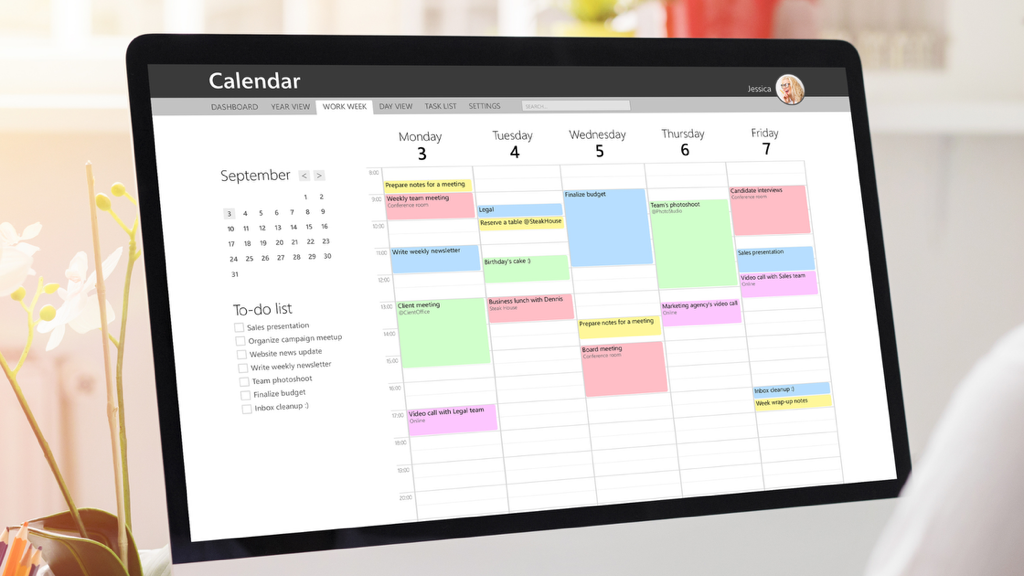Get More Done with Time Boxing During Retirement
Written by TYE Medical on Nov 30th 2023
Who doesn’t need to be more efficient with their time? Whether you’re barreling toward retirement and want to increase efficiency in the home stretch or want to accomplish specific goals during your golden years, time boxing is a flexible effective method for getting things done.
Time boxing is Elon Musk’s chosen method for maximizing time, and if it works for the busiest man on the planet, it can probably help you manage time to the fullest in your senior years. This method helps you push off distractions and maintain focus–and today, focus is key. So much vies for your attention in today’s demanding culture. Time boxing brings structure and boundaries to your days.
If you’re skeptical–don’t be. Time boxing isn’t about cramming your retirement schedule full of tasks and mundane chores. After all, you’ve earned plenty of time for rest and leisure. Time boxing can help you protect those priority retirement goals, long-held dreams, and times of rest you've been looking forward to for so long.
Think of time boxing as a way to both protect, manage, and maximize the time you have. Here’s what you need to know to get more done with time boxing during your senior years.
What Is Time Blocking?

Time blocking is a time management method that involves breaking up your day into specific boxes of time for specific tasks. This means you schedule your day in advance, including simple daily tasks, projects, appointments, meetings, or anything that will consume your time.
Time Boxing VS Time Blocking
Also referred to as time “blocking” these methods are essentially the same thing but with one key difference. Time blocking focuses more on when you’ll work on specific things. In other words, time blocking puts your tasks on the calendar.
But time boxing emphasizes how long you’ll spend on tasks, regardless of when (what time of day) you do it. It involves hard stop times, which can be tricky for some of us. Time boxing ensures you have firm boundaries on your calendar so that one task doesn’t run into another.
If you’re thinking these two “methods” seem to go together, you’re right. Most people want to arrange their time slots (time boxing) on a schedule that indicates when they start and stop. You’re basically using both approaches to be most effective. Time boxing says I’m going to spend two hours on project A, and time blocking says I’m going to spend those two hours from 1:30 to 3:30 in the afternoon.
Since we’re focusing on those hard-stop times, we’ll refer to this as time boxing. If you don’t struggle with knowing what to work on when, then you could use time boxing by itself, knowing you’re going to spend 30 minutes in your garden during the course of the day.
Here is a sample retiree’s schedule using time boxing, courtesy of the Scribbling Boomer website:

How Time Boxing Increases Productivity
Time boxing is a simple time management method, but it’s the simplicity that makes it so effective. It essentially sets you up to focus on specific tasks for a specific length of time, leading you to prioritize in advance.
Helps You Prioritize
According to the pickle jar theory, it’s best to prioritize your most important tasks and put them first in your day. You put your big rocks in the jar first, which are those you must complete. Then you fill the rest of the jar with the small (less important rocks) knowing that you might not have room for all of them. (But that’s okay, because the most important ones are already in the jar.)
This is a basic idea, but how often do you think it will be okay to let priority items slide until later? It’s easy to get distracted and allow the less important items to fill your day first. Advance planning and time boxing allows you to prioritize the “big rocks” first to ensure they’re completed first.
In retirement, your big priorities are less about your career and more about what you value. So, keeping those priorities in order and planning your day accordingly can help you stay productive in the things that matter most.
Prevents Procrastination

Avoiding or delaying necessary tasks can relieve stress in the short term but often triggers anxiety at a later time. Procrastination is both a drag on your productivity and even your mental and emotional health.
And anxiety only increases as deadlines and opportunities are missed. In retirement, procrastination still costs, like when those plane tickets jump over $200 in price or you put off buying your granddaughter’s birthday gift and are dashing to the store anxiously at the last minute.
Time boxing ensures that all of your tasks, big and small, have a block of time on your schedule so that little gets missed. And as you see all the filled slots (even the scheduled downtime) you realize there is no time to procrastinate! It creates a sense of urgency.
Allows More to Be Done In Less Time
Ever hear of Parkinson’s law? It's an observable principle that says you’ll use all the available time you assign to a task. If you schedule three hours to clean your house, you will more than likely use up those three hours and perhaps more even if you could finish it in one and half hours.
Time boxing can help curb Parkinson’s Law because it limits the time available for each task. This means that you must stop whether you're finished or not and move on to the next thing. Of course, for ongoing projects, you schedule time boxes on different days or at different times on the same day.
These hard stop times also create a sense of urgency that helps you to stay focused, knowing you’ll have to move on to something else.
Promotes Focused Work

Time boxing is about “deep work” and focused time. It prevents multitasking [insert link to recent article, Tips for Time Management During Retirement], which is doing more than one thing at the same time, frequently having to switch your attention back and forth between tasks.
Multitasking is considered to be hugely inefficient according to time management experts. This is because of “task switch cost,” which is the time it takes to mentally switch from one task to another. It requires a refocusing of your brain. In short, multitasking actually slows productivity because it costs you time whenever you attempt to shift your attention. Since no one can literally focus on more than one thing at once, it requires a constant shifting and dividing of attention that slows you down.
The more focus, the fewer brain shifts, the less time wasted. Experts even claim that time management methods like time boxing increase your quality of work because you’re engaging on a deeper, highly focused level.
In retirement, you want every minute to count and to give your focused attention on the things you value in life. In a sense, these years can be the most important and impactful in terms of how you spend your time. This is how your time boxing can be an asset to time management in your golden years.
Allows for Task Batching
When you plan ahead and time box your tasks, you also have the opportunities to task batch, which means grouping similar tasks together into one block of time. If you had several tasks to do around the house in a day, you could batch them all together in a two-hour block of time. You can also group creative tasks together like dreaming up your next road trip and working on that painting you started in your art class earlier in the week.
When you group similar tasks together, there is less task switch cost since it’s easier for your brain to move between similar tasks.
Time Boxing Mistakes to Avoid

Like most time management methods, you can get off track if you’re not aware of the pitfalls. Here are a few things to avoid to ensure success as you time block and time box during your retirement years.
Not Blocking Your Entire Day and Week
The goal is to see how you’re spending your whole day and where you can maximize your time. If you’re only accounting for pieces of your day, your time management will be lacking. It’s difficult to follow hard start and stop times if you’re missing chunks of allotted time in your schedule.
Not Prioritizing Before You Time Block
Time blocking is about knowing when you’ll start your tasks, but it’s also crucial that the most important things are accomplished first. You never know what can come up, and time blocking isn’t foolproof because you can’t control everything. This means that certain things must be prioritized to the top before you block them on your schedule. If you’re not careful about this, you could find yourself frantic at the end of the day.
Trying to Block Too Many Tasks
You can make any schedule look good on paper. But is it doable? If your schedule isn’t realistic, then no amount of time blocking or time boxing is going to help you accomplish everything on your agenda.
When you try to fit too many tasks into your day, it leads to stress, burnout, and a lack of productivity. The best thing you do for your schedule is be realistic and block time accordingly.
Not Building in Buffer Times and Down Times
A little built in time buffer throughout your daily schedule can help keep you on track. This will keep your entire schedule from being derailed because an unexpected and urgent task arises or you encounter an interruption beyond your control. If you have no break times or buffer time, these encroachments on your schedule can really amp up your stress and make you feel like you’re always running behind.
Be Intentional with Your Retirement Years

Time management for retirees is crucial as it helps you be intentional concerning the things you value most in life. These decades aren’t primarily about working to earn income but are instead about spending your time wisely in valuable ways.
Time boxing and time blocking can help you spend your retirement years with confidence and purpose rather than with anxious and overwhelmed feelings.


